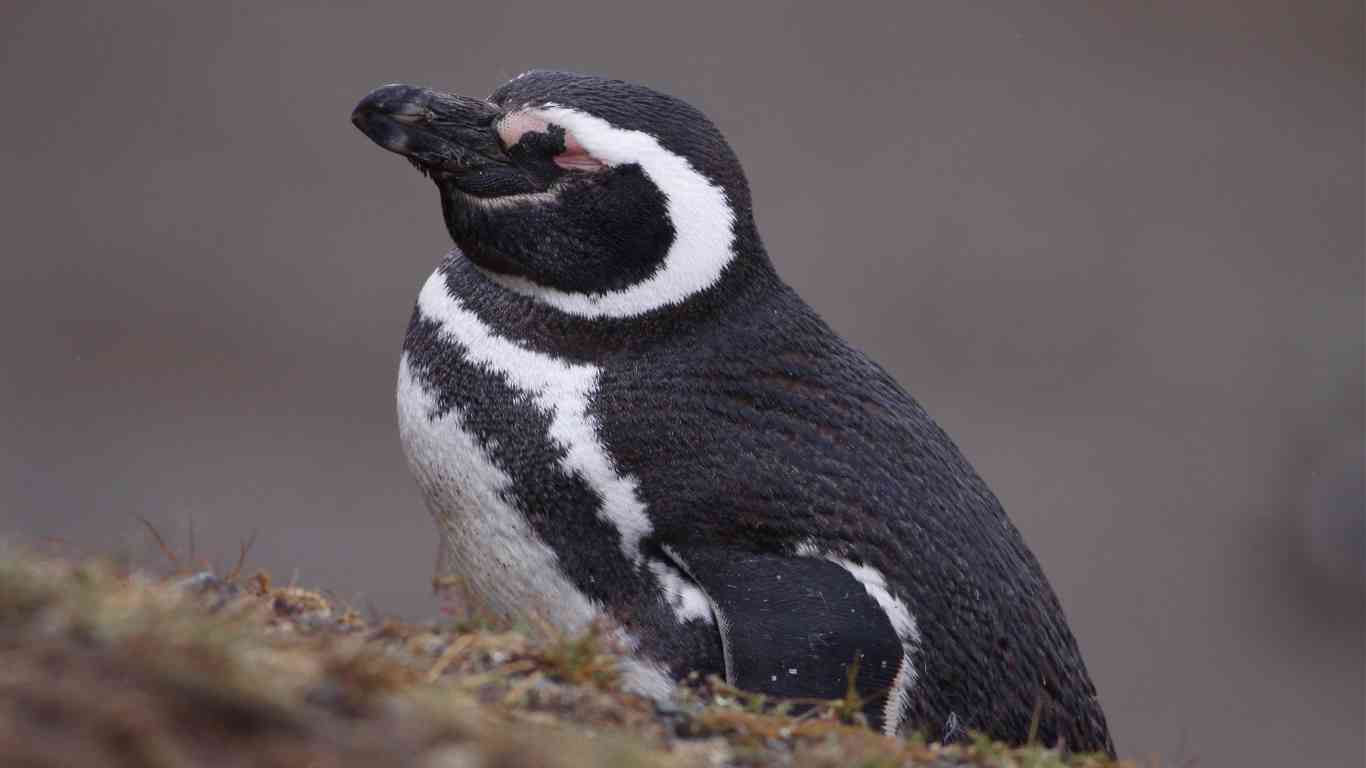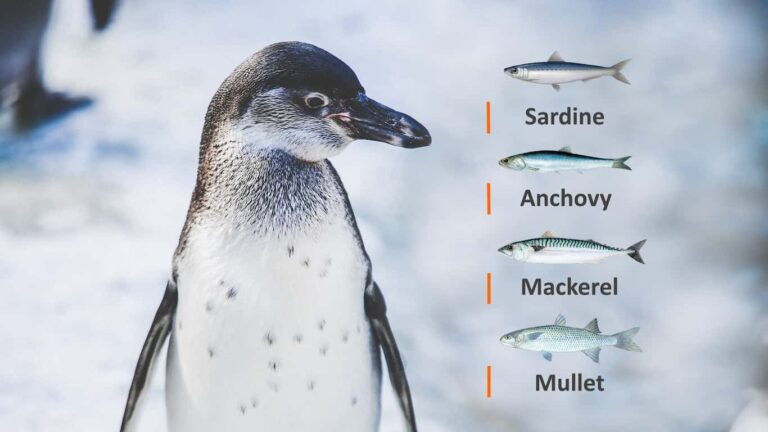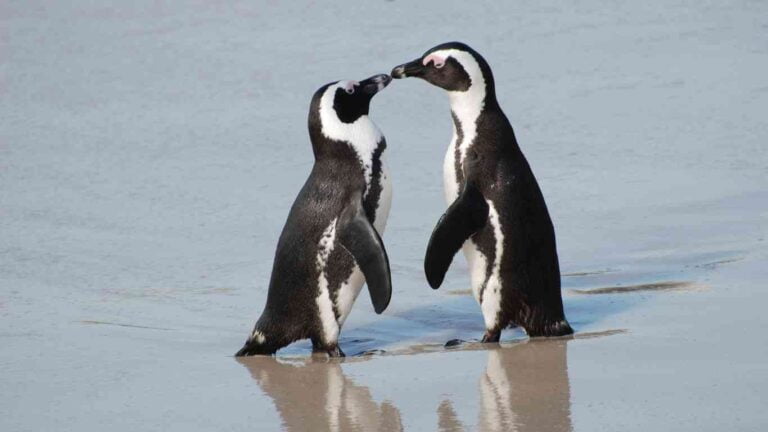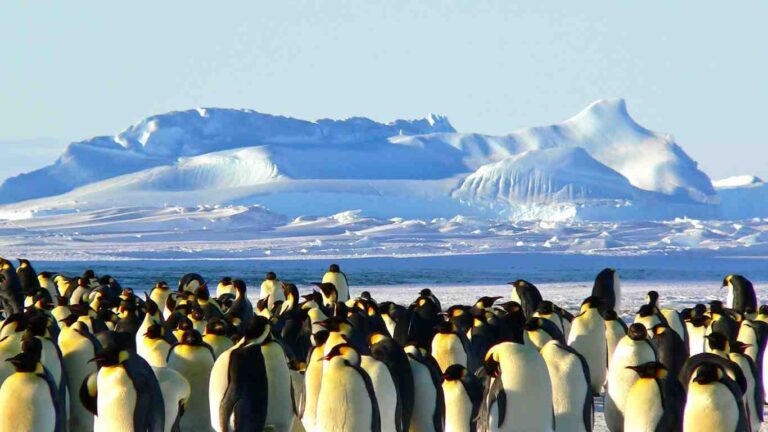Where Do Penguins Sleep in the Wild?
Penguins, known for their charm and typically found in the Southern Hemisphere, have adapted unique sleeping habits to thrive in harsh environments.
Discover how penguins unwind and sleep after their busy days of foraging for food and socializing with other members of their colony.
Where Do Penguins Sleep?
Penguins sleep in various locations depending on their environment and species. Some rest on beaches, others on rocky cliffs, and some burrow in the ground or rest on ice.
Penguins can sleep standing up on the shores or beaches. They may rest close together in colonies for warmth and protection.
Unlike humans and many other animals that have distinct sleeping spaces like nests or dens, penguins do not have special structures for sleep.
Some species, like the Little Blue Penguin, use burrows or natural hollows for shelter and sleep.
Others, such as Rockhopper penguins, might tuck themselves into rocky crevices.
Sleep locations vary greatly, heavily influenced by their immediate surroundings, environment and the need for safety from predators.
In Antarctica, Emperor Penguins are known to sleep standing up on the ice. They huddle together for warmth in their colonies to rest. Penguins can rest and sleep in the water as well.
In the wild, penguins often sleep where they find themselves as night falls, whether it be on land or in the water.
Here is an explanation of where different species of penguins sleep:
Adélie Penguins: Adélie Penguins build pebble nests on dry ground for sleeping, but they can also sleep while floating at sea.
African penguins: African penguins typically sleep lying down in burrows.
Chinstrap Penguins: Chinstrap penguins in Antarctica, primarily sleep on land during the breeding season, they may also rest on ice floes or in the water during their non-breeding period.
Emperor penguins: Emperor penguins take numerous short naps, usually under 10 minutes each, both day and night. They can sleep upright on land with their beak nestled into their flipper, or they can doze while floating in the water.
Galapagos Penguins: Galapagos penguins sleep in burrows during the day and return to the ground to sleep at night.
Gentoo Penguins: Gentoo penguins sleep in nests on beaches or among tussocks.
Humboldt penguins: Humboldt penguins sleep in burrows they excavate in guano layers and sandy beaches, or they nest atop cliffs.
King Penguins: King Penguins typically sleep lying on their stomachs on both land and ice.
Macaroni penguins: Macaroni penguins rest in nests constructed from pebbles in muddy or gravel-strewn zones.
How Do Penguins Sleep?
Penguins’ sleep patterns are very different from humans’ nighttime rest. They sleep in brief intervals around the clock.
Penguins typically take brief, intermittent naps that last just a few minutes.
They can rest while standing, lying down, or floating in the water, thanks to an adaptation that allows half of their brain to stay alert.
Penguins can adapt their sleep needs to their surroundings and effortlessly switch between being alert and sleeping, suited to their challenging natural habitat.
This semi-conscious sleep helps them stay aware of potential dangers.
How Long Do Penguins Sleep?
Penguins generally sleep in short bursts rather than for extended periods, often napping for only a few seconds to a few minutes at any given time throughout both day and night.
Their sleep patterns are erratic and influenced by the need to stay alert for predators in the wild. Parental duties during breeding season can further reduce their sleep frequency.
In contrast, captive penguins without predatorial threats and with predictable feeding schedules might experience somewhat more regular sleep patterns.
Short naps can be enough during busy times like breeding or feeding. However, penguins tend to sleep longer and deeper when there are no interruptions or duties.
Final Thoughts
In summary, penguins in the wild sleep based on need and instinct. Different habitats lead to varied sleep patterns across species, blending vigilance with rest.
Whether on islands, mainlands, ice, or in water, their sleep and wake cycles are sporadic, driven by survival needs and the rhythm of their environment.
(Featured image by dfaulder on Flickr)







